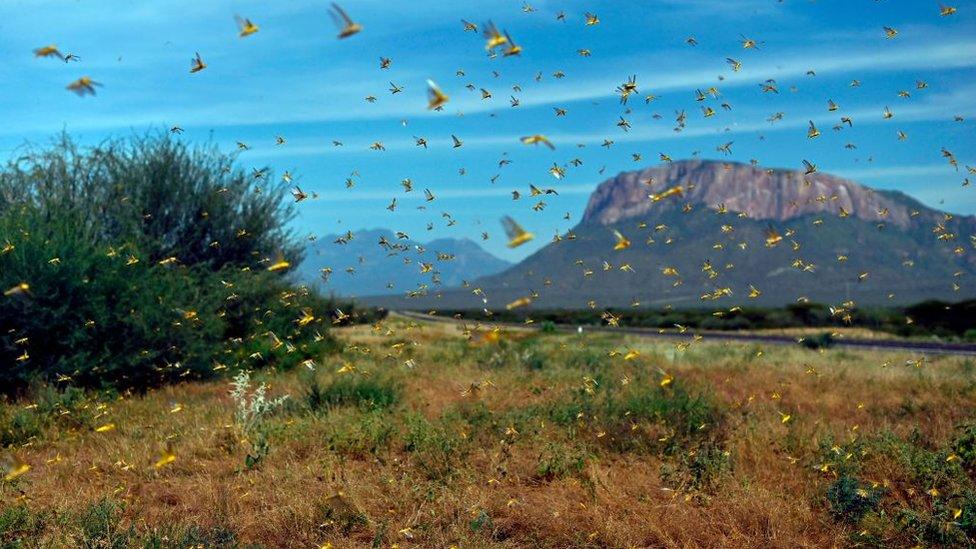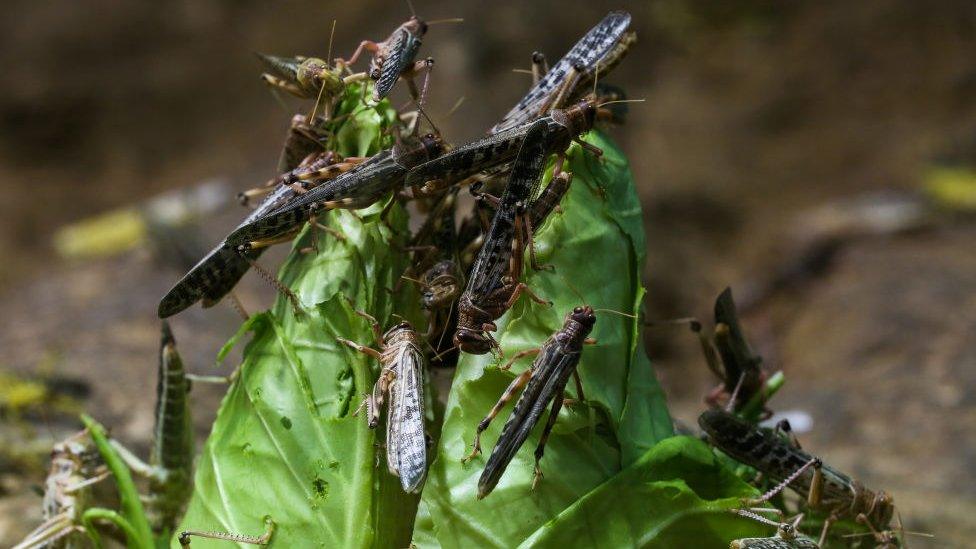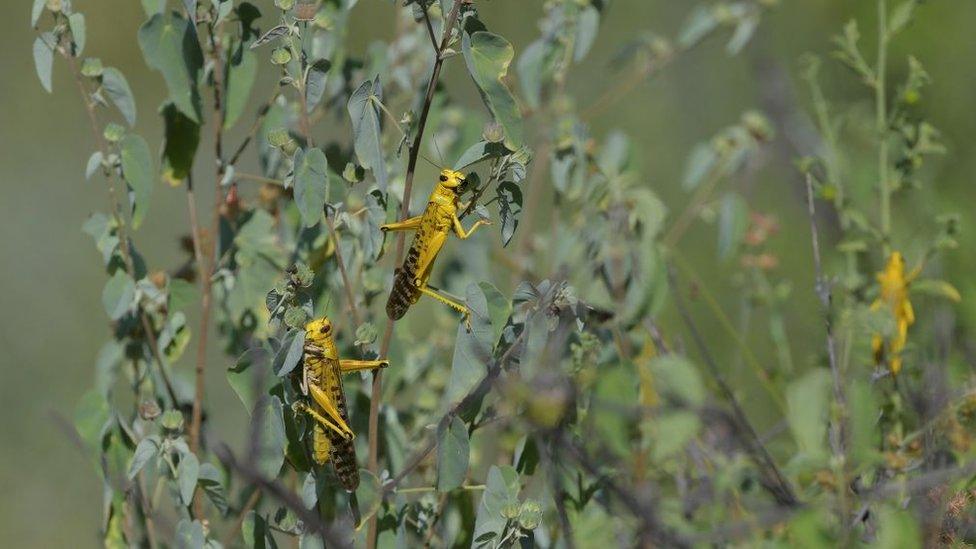Locusts: East Africa affected as huge swarms destroy crops
- Published
- comments

A number of east African countries including Kenya (pictured) have been effected by swarms of locusts
Parts of east Africa have been hit by huge swarms of locusts.
Ethiopia and Somalia are dealing with the worst locust swarms they've seen in 25 years, according to the Food and Agricultural Organisation (FAO), whilst Kenya hasn't experienced an infestation of this scale for 70 years.
South Sudan and Uganda are also at risk if the swarms continue to grow and spread.
The United Nations (UN) has called for international help to tackle the locust invasions which are destroying millions of crops, threatening a food crisis. The crops are important sources of food for many in the countries affected.

A group of locusts devouring a cabbage
Why are locusts such a threat?
The real worry is the rate at which the insects devour crops meant for humans to eat.
A spokesman for the UN's Food and Agricultural Organisation (FAO) has asked for support to prevent "threats to food security, livelihoods, malnutrition".
Locusts can travel up to 150 kilometres (93 miles) in 24 hours and an adult insect eats its own body weight in food each day.
According to the FAO, a locust swarm the size of Paris can eat as much food as half the population of France in just one day.
It fears the numbers of the insects could multiply 500 times by June.
What are locusts?
Locusts are insects that are related to grasshoppers.
They are able to reproduce quickly and form swarms that can travel over large distances.
Desert locusts, which are found in Africa, the Middle East, and Asia, can be found in more than 60 different countries. During plagues, they can affect around 20 percent of the Earth's land.

Locusts can eat their body weight in food every day
"The speed of the pests' spread and the size of the infestations are so far beyond the norm that they have stretched the capacities of local and national authorities to the limit," the FAO said.
What has caused the locust infestations?
Unusual climate conditions including heavy rain have been linked to the devastating locust swarms. Heavy rainfall at the end of last year created ideal conditions for the insects to spread.
East Africa isn't the only region that's been affected. The insects have also been breeding in India, Iran and Pakistan and this could cause swarms in the spring.
The FAO is trying to control the pests by spraying crops with insecticides from aircrafts above.
- Published23 January 2020

- Published20 March 2018

- Published10 January 2020

